Mari national costume

National costume is not just clothing, it is the culture and history of the people, their traditions and way of life. A striking example of this is the Mari national costume, which reflected the ideas of the Mari people about the harmony and beauty of life.
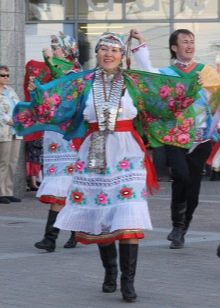
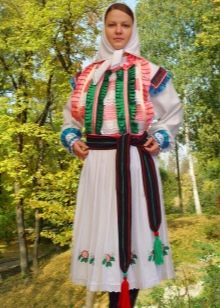
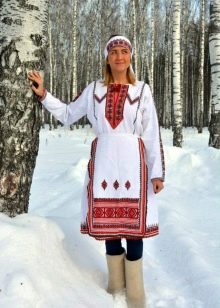
History of the people
The Mari people belong to the Finno-Ugric language group and are the last pagan people in Europe. Despite the Christianity adopted many centuries ago, the Mari people carry out magical and pagan rituals.
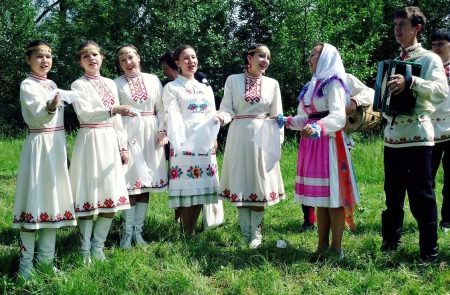
The people are divided into three territorial groups:
- mountain Mari of the Republic of Mari El;
- meadow - Volgo-Vyatka region;
- eastern - the Bashkir Republic and the Urals region.
Each group of Mari in the costume has its own characteristics, differences in decoration and ornamentation, but in general, all elements of folk dress for the Mari are the same.
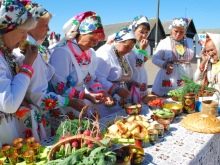
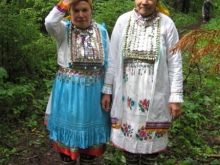
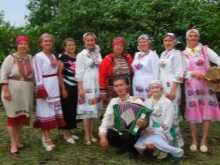
The main parts of the folk costume
An ordinary costume consists of a shirt, trousers, a belt with pendants, a headdress and shoes: in everyday life these are woven bast shoes, and in holiday ones - boots made of sheep or cow leather.
The model of festive clothes was no different from everyday ones - the outfit could only be distinguished by specific pendants and adornments.
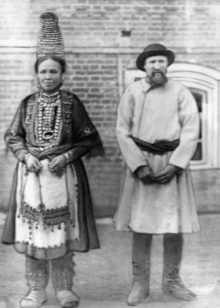
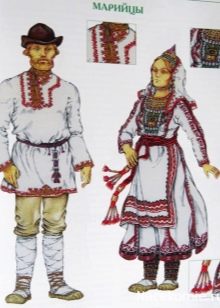
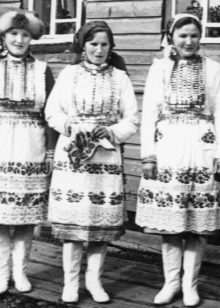
The tunic, the main part of any Mari outfit, was created as follows: a linen or hemp linen of a certain length was made on a home machine, then the fabric was folded in half and a hole for the head was cut out. Without cutting out the armholes, part of the fabric was folded lengthwise and sewn on - thus the sleeves were obtained.

In the cold season, the national costume was complemented by the following elements: caftans of various types, a sheepskin fur coat, winter shoes (felt boots, less often boots) and a warm headdress.
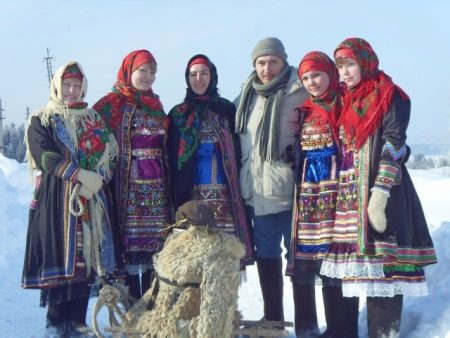
Features of the Mari folk costume
The Mari costume, like the outfit of any other nationality, has its own characteristic features and characteristics:
- The main color is white interspersed with black, burgundy and brown embroidery. In later periods, red began to predominate in national dress - it was obtained as a result of boiling certain plants.
- In the embroidery, geometric and floral ornaments were present to a greater extent, symbolizing the belonging of the wearer of clothing to one or another social group. In addition, ritual symbols that bring good luck and prosperity were encrypted in the embroidery.
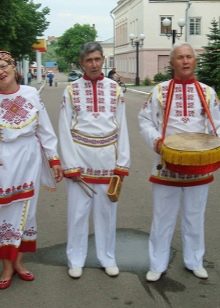


- The Mari costume fell under the influence of Russian culture and borrowed a lot from it: for example, in later periods, the Mari began to make clothes from cotton, and not from flax, as it was before.
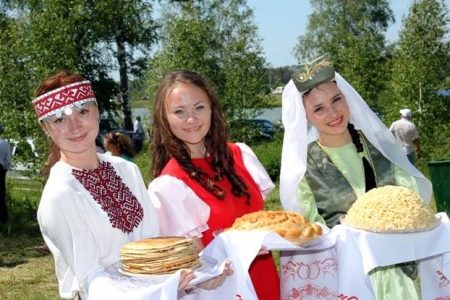
- Pants were worn under any outfit, no matter whether it was male or female.
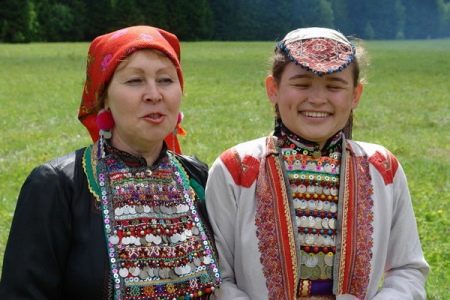
Men's suit
The male costume consisted of a shirt slightly below the knees, a belt, a caftan, canvas pants and bast shoes. At the end of the 19th century, the length of the shirt decreased - by this time the tunic reached only to the middle of the thigh.
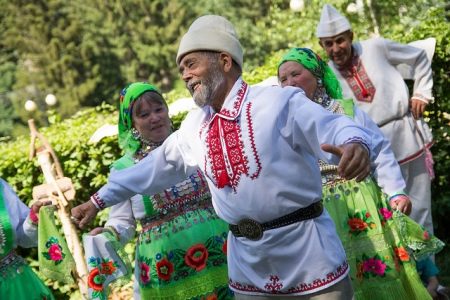
As for the pants, they were sewn differently in different groups of Mari. The meadow and mountain Mari sewed narrow trousers, and the eastern ones - wide ones.
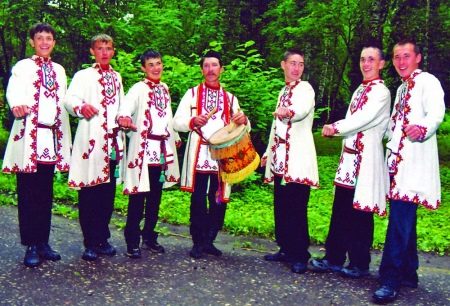
Kaftans were an integral part of the wardrobe: in summer they were made of canvas fabrics, and in winter they were made of broadcloth. As a rule, caftans were black and white.

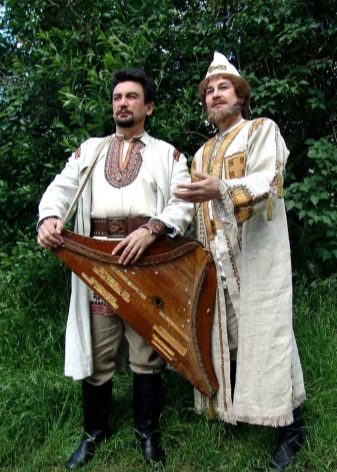
It is noteworthy that the neckline on the underwear shirt was tied with a special ornament, which protected the man from evil spirits and the evil eye.

An integral part of the costume was a headdress - in winter this was a felted hat or a cap with earflaps, in summer - a white (festive) and black (everyday) hat, which was later replaced by a cap.

Woman suit
In contrast to the male, the women's outfit was distinguished by a great variety and unique beauty of jewelry and ornaments.
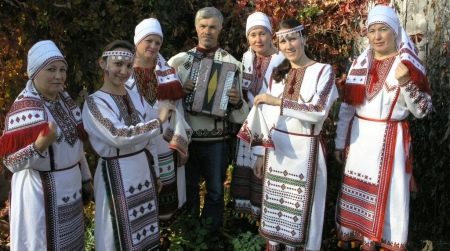
The basis of women's clothing was also a tunic shirt, embroidered with ornaments on the chest, sleeves and hem. The meaning of the embroidery symbols spoke of the bearer's belonging to the culture, her social status and marital status. In rare cases, the back of the shirt was also covered with ornaments.

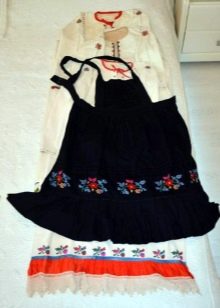

The women's tunic was decorated with beads, buttons and multi-colored ribbons - the more jewelry was on the shirt, the more a woman could be proud of her handicraft skills.
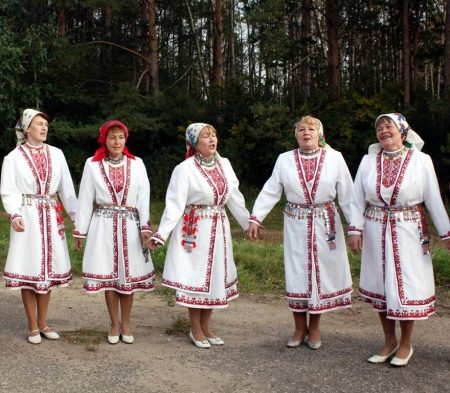
Under the shirt, Mari women, like men, wore canvas pants. Their cut depended on the area of residence - the eastern Mari wore loose trousers, mountain and meadow ones - in narrow ones.



Women's caftans are divided into a summer model and a winter one. The summer caftan reached the level of the wearer's waist, the winter caftan was designed to keep warm and had a straight, tunic-like shape.


The headdress in the composition of the female Mari folk costume played an important role and was divided into two main types - maiden and female. The decoration, model and certain type of wearing a headdress indicated the status and position of the Mari in society and age.

In ancient times, married women wore ornamented shawls and shawls, while girls wore leather and woolen headbands, lavishly decorated with beads and coins. Later, shawls and headbands were supplemented with other attire: a hemispherical takia, on which an ordinary scarf is worn, a frame hat, a spatula-shaped magpie, a pointed headdress, and so on.



The obligatory elements of a woman's costume were the following elements: a bib, an apron and a belt. These elements were decorated with colorful ribbons, coins, embroidery and beads. Purses, handkerchiefs, special pockets, multi-colored towels, iron rings and earrings and much more were attached to the belt.
Aprons were embroidered with braids, ribbons and decorated with coins and beads. The bibs were of different types and shapes and consisted almost entirely of coins.
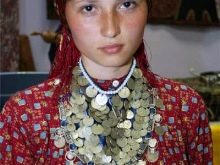

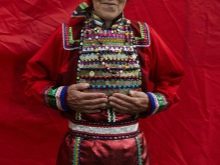
As for the shoes, for women it was the same as for men - these are bast shoes in the summer and felt boots in the winter.
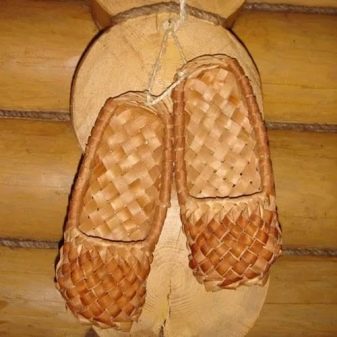
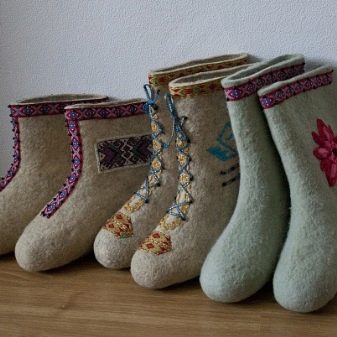
The female Mari outfit was beautiful, richly decorated with embroidery, ribbons, and coins. At will, a woman or girl could additionally decorate her outfit with rings, beads, belt towels and other accessories.
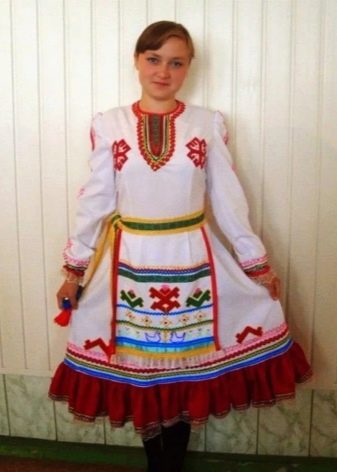

Children's Mari costumes are in many ways reminiscent of adults, only on children's ones there are fewer decorations and embroidery had a protective, protective character. Bright flounces were often present in girls' outfits - on the sleeves from the elbow to the end, and in the main part of the clothes from the waist to the hem.

Wedding outfit
The most beautiful among the Mari among all types of attire was a wedding suit. The main color of the robes is, of course, white.
The groom put on his festive attire, girded himself with a special belt decorated with coins, and put on a special hat with curled edges.
The bride's wedding dress consisted of several parts. A white dress was worn on the undershirt, the hem of which was sewn with coins, a white caftan was worn on top, then a green caftan, along all the edges of which coins were sewn, and on top of all this was an apron embroidered with a wedding ornament, which was tied with a special belt towel.

All elements of the outfit were decorated with coins, ribbons, beads, lined with fur, decorated with bright embroidery and colorful braid. There were no boundaries in jewelry, except for the observance of traditions and the imagination of the craftswomen. The bride must wear a red scarf - in summer it is tied over a takia, in winter - over a fur hat.
Some elements of the wedding dress of the Mari of different groups differ from each other, but all the costumes are the same, beautiful and richly decorated.
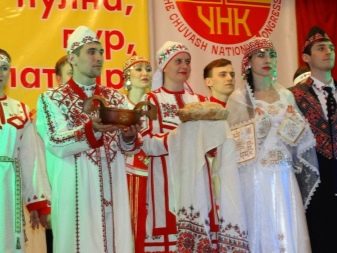
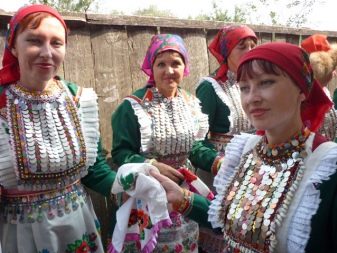
Modern Mari national costume
Time does not stand still, and the Mari national costume is undergoing changes, but even in the modern technological age, it does not lose its relevance and popularity among the representatives of the Mari people. More and more young people wear a national costume for weddings, holidays and special events, thereby showing their involvement in the history and culture of the Mari people.
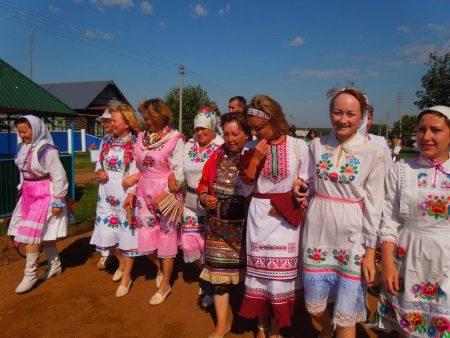
The modern mari costume is slightly different from the traditional one and has several new clothing details:
- a red vest decorated with coins and ornaments is worn over a white short-sleeved tunic and embroidered with gold embroidery;
- the bride's wedding dress is a shortened (knee-length) tunic and a white caftan worn over the tunic with green embroidery along the hem. Also, the outfit is decorated with floral ornaments and various ribbons;
- a festive women's costume looks like this: a satin dress with ruffled sleeves and a bib with floral designs.
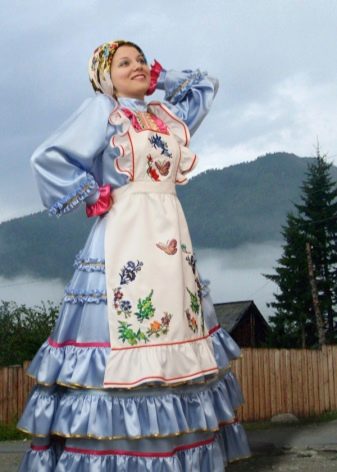



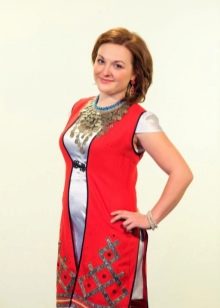
No matter how the Mari national costume changes, it will always be praised and honored by grateful descendants who do not forget about the culture and traditions of their people.









